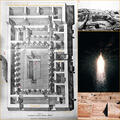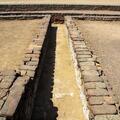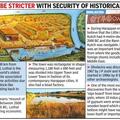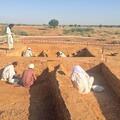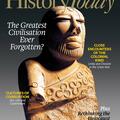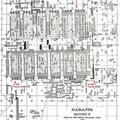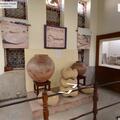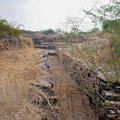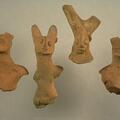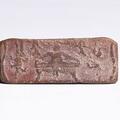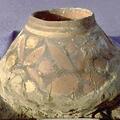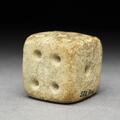"In my view Hindu bathing places, such as the ghats at Varanasi, may have existed from the time of the Indus civilization.
344 posts, also carried on our Facebook page, about the ancient Indus Valley civilization, including important news, research and occasional visits to museums with ancient Indus artifacts.
Dec 26, 2015
"The Great Bath, which I have reserved to the last, was part of what appears to have been a vast hydropathic [water therapeutic] establishment and the most imposing of all the remains unearthed at Mohenjo-daro.
Dec 22, 2015
Lothal's sophisticated sanitary and drainage system was a hallmark of ancient Indus cities. All of Lothal's drainage channels met at right angles, engineered with several steps to separate solid and liquid wastes.
Dec 7, 2015
Farmers in the Indus valley were the first to spin and weave cotton. In 1929 archaeologists recovered fragments of cotton textiles at Mohenjo-Daro, in what is now Pakistan, dating to between 3250 and 2750 BCE.
Nov 26, 2015
The Archaeological Survey of India has apparently allocated a large sum to improve sites at Lothal and Dholavira and enhance the visitor experience.
Nov 23, 2015
Recent news includes the opening of a Rediscovering Harappa: through the five elements (water, earth, fire, air, ether) Exhibition at the Lahore Museum on November 21st, and the apparent discovery of Indus artifacts from 2600 BCE in Sikander South near Dera Ismail Khan.
Nov 18, 2015
Out now in UK - History Today - main feature by Andrew Robinson on the greatness of the civilisation western media forgets about http://www.historytoday.com/magazine
Oct 12, 2015
Excavations at the "Granary," Harappa, Trenches 41 exposed new facts about this most puzzling of structures. Built apparently at one time, and more than once reconstructed on the foundations of a previous structure, there is absolutely no sign of grain in the rooms or hollow areas between them.
Aug 21, 2015
Google has come up with a 3D Viewer that lets you visit the Harappa Museum and parts of the site online.
Jul 28, 2015
The great Ancient Indus city of Dholavira features some of the best preserved stone architecture from the ancient Indus period. Traveller Jitaditya Narzary recounts in detail his visit to the site and gives an inside look at this beautiful site and the history
Jul 17, 2015
Male figurines are sometimes also identified by secondary sex characteristics such as beards. Occasionally, male figurines wear a headdress with two upward and/or outward projections like horns.
Jul 1, 2015
This beautiful three-sided terracotta sealing from 2000 BCE depicts a male cult figure seated in a yogic posture on a throne, a bull-like animal, and five characters in the Indus script. Today, the seal resides in the Ashmolean Museum at the University of
Jun 29, 2015
Collection of Ravi Phase pottery featuring several pieces with a variety of detail and colors.
Jun 25, 2015
A number of dog figurines have been found at Harappa and at other Indus sites. The collars found on dog figurines probably signify domestication, unlike the collars on the rhinoceros or the large feline figurines.
Jun 15, 2015
A cubical die with 1 to 6 dots was found in rubble during excavations at Harappa. Many such dice were also found at Mohenjo-daro. John Marshall writes: "That dicing was a common game at Mohenjo-daro is proved by the number of pieces that have been found.


